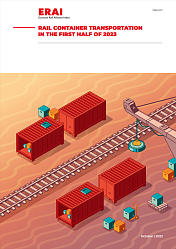The terminal will specialise in reloading containers from 1520 mm gauge to 1435 mm gauge and back, depending on the direction of transportation. The terminal will also be able to handle bulk cargo and will have a storage area for oversized cargo. it will be operated by Unionway.
The construction of the first stage of the terminal may begin this year, and the company will start providing services from 2025. The total investment costs will amount to more than 23 million US dollars. During the project implementation period, it is planned to create 70 new workplaces.
Poland-Belarus
The border between Poland and Belarus has four crossings, all handling container traffic from China to Europe and back. The major border facility is located in Brest. Two other railway crossings, Bruzgi/Kuznica and Svisloch/Siemianowka, are situated in the Grodno region of Belarus. And there is the border crossing of Siemianovska.
The Bruzgi/Kuznica border point handled the first container train from China to Europe in July 2017. The Chengdu-Łódź train was launched in cooperation with the United Transport and Logistics Company — Eurasian Rail Alliance (UTLC ERA). In March 2018, the mentioned train started to run via the Svisloch/Siemianowka railway crossing located 70 kilometres south from the Bruzgi/Kuznica point.
Grodno region
The Grodno region has a promising logistics industry. Recently, several investors have shown interest in establishing logistics firms here. For example the Portela company, which wants to create a logistics center in the Grodno region.
Although these border crossings have a huge potential considering the traffic volumes between Europe and China, the situation is now less favourable. Traffic via the main route of the New Silk Road has shrunk significantly, as companies want to avoid transit through Russia and Belarus.
Join the discussion
Do you want to hear more about the current circumstances on the New Silk Road? Attend our special edition of the RailFreight Summit next week in Brussels. Here we will talk about the alternatives, the sanctions and the impact of the war in Ukraine on Eurasian traffic.
The event takes place on Wednesday 6 April in Brussels. You can attend physically or online. Registration can be done here.





